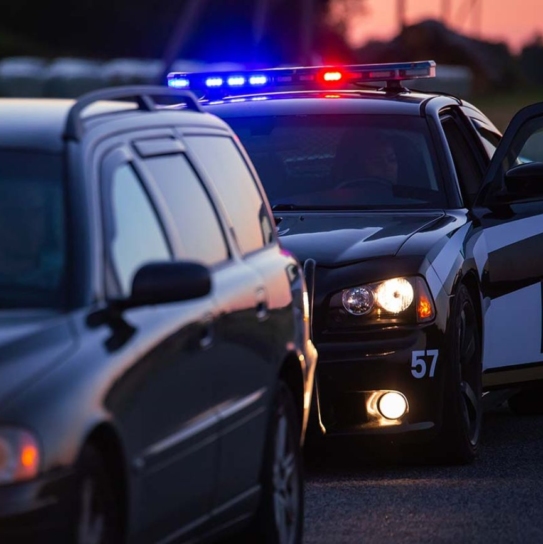Breathalyzers use either infrared spectroscopy or fuel cell technology to measure alcohol molecules present in one’s breath and estimate their blood alcohol concentration (BAC) using this reaction.
Experienced Johns Creek DUI lawyers often challenge these results through pre-trial hearings to suppress chemical test evidence or other legal defenses such as field sobriety tests or breathalyzer accuracy issues.
Infrared Spectroscopy
As a proven chemical science technique, infrared spectroscopy has long been utilized by chemical sciences professionals for various applications. This is especially true within forensic sciences and laboratory work where it serves as quality control to ensure all tests conducted correctly.
Breathalyzers utilize infrared spectroscopy to identify frequencies absorbed by alcohol molecules in your breath, and converts this data to an estimated blood alcohol concentration (BAC).
Breathalyzer results can often be challenged because they can be subjected to interference from various sources, including mouth alcohol from recent drinking, spitting or regurgitation and substances such as mouthwash and breath fresheners. Furthermore, equipment itself such as dispatch radio transmitters, walkie-talkies, cell phones and fluorescent lighting may create interference that alters breath testing results and may skew results erroneously.
Asserting that a person was not fully alert and in control of their vehicle at the time of arrest is another effective strategy for challenging breath tests. Field sobriety tests can be affected by certain medical conditions like diabetes or gastroesophageal reflux disease that produce acetone which breathalyzers mistake for alcohol, leading to false positive results.
Fuel Cell Technology
A breathalyzer’s fuel cell is its central component. Utilizing potassium dichromate and other chemicals, it detects alcohol vapors. When someone blows into their handheld device, liquid solution changes from red-orange to green depending on how much alcohol there is present, while its chemical reaction converts this information into numbers that allow users to estimate their blood alcohol content (BAC).
As well as its role in DUI prosecutions, breathalyzers also serve a purpose during field sobriety tests. While these tests aim to detect alcohol consumption in someone’s system, they cannot differentiate between different kinds of ethanol consumed such as beverages, gasoline and mouthwash since all of them appear identical to the machine.
Some individuals can still register a high BAC even without alcohol being present, as their machine could misinterpret certain drugs–for instance acetone produced by diabetics or toluene produced during petroleum refining operations–as alcohol.
Johns Creek DUI lawyers can assist in your defense against charges brought against you and safeguard both your freedom and driving privileges. Jim is Board-certified by the National College for DUI Defense, has combined 36 years of experience has seen him successfully defend countless DUI cases including trials as well as DMV hearings to reinstate licenses.
Partition Ratio
Blood-to-breath partition ratio is the cornerstone of breath test machines in Texas and throughout the US, used by breath testing devices to estimate blood alcohol concentration (BAC). It assumes that for every 2100 cubic centimeters of deep lung air there exists 1 milliliter of blood with that much alcohol present in it.
Problematically, however, this ratio can differ drastically between people. This is due to individual breathing styles. Your depth of breathing, body temperature and gender all impact how much air enters your lungs during each breath cycle and in turn alters the partition ratio, giving a falsely high reading.
Johns Creek DUI lawyers who employ this strategy of defense for DUI charges can challenge breathalyzer results as unreliable by showing they were miscalibrated or maintained, or by asserting that external factors like mouth alcohol consumption or medical conditions impacted its accuracy.
At the core, any driver must challenge these tests and their results as the State can use this evidence alone to secure DUI convictions. A DUI conviction may have serious repercussions for academic pursuits, employment opportunities and family finances – our DUI lawyers can assist in finding weaknesses in their case to help defend you and avoid these repercussions.
Error Rate
Breathalyzers may give the appearance of being highly accurate; however, in reality they have an estimated margin of error between 20 percent on either side. This error margin can have serious ramifications when used to decide whether someone faces DUI charges.
Reason being that everyone’s body absorbs and eliminates alcohol at differing rates; so the amount of alcohol present during a breath test could depend on what has recently been consumed or on any products with alcohol content in your mouth (like mouthwash or breath fresheners).
Law enforcement should ensure all Breathalyzers used by law enforcement are certified, calibrated, and maintained correctly; otherwise your lawyer can use these requirements as ammunition in building an effective defense against your breath test results by showing they do not meet their burden of proof beyond reasonable doubt.
Breathalyzer tests must satisfy Daubert and Frye standards of scientific evidence in order to be admissible as evidence in court, according to Johns Creek DUI lawyers. However, these requirements only require valid, reliable tests that produce predictable results – which breathalyzers don’t meet. Our Johns Creek DUI lawyers therefore regularly challenge them in court proceedings. If your case rests on breathalyzer test results then contact our firm today so we can schedule an appointment to discuss all available legal strategies with you.


